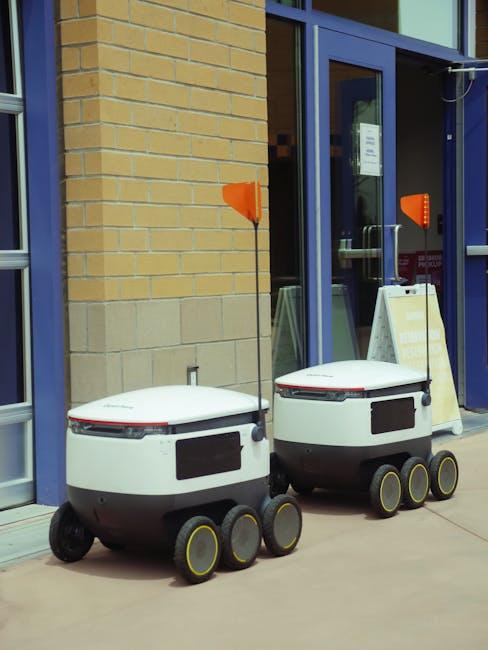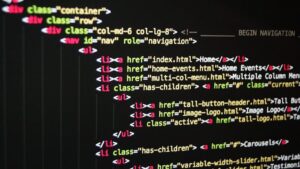Designing Autonomous Workflows with AI-Driven RPA: A Complete Guide
In today’s fast-paced digital landscape, businesses strive to maximize operational efficiency and reduce human error. One of the most transformative technologies enabling this shift is AI-driven Robotic Process Automation (RPA). By designing autonomous workflows powered by artificial intelligence and RPA, organizations can automate complex, repetitive tasks seamlessly, freeing up human resources for more strategic initiatives.
What is AI-Driven RPA?
Robotic Process Automation (RPA) automates rule-based repetitive tasks using software bots. Adding artificial intelligence to the mix, such as machine learning, natural language processing (NLP), and computer vision, elevates traditional RPA into intelligent automation. This AI-driven RPA can make decisions, interpret unstructured data, and adapt autonomously, thus enabling fully autonomous workflows that require minimal human oversight.
Key Benefits of Designing Autonomous Workflows with AI-Driven RPA
- Increased Efficiency and Speed: Automate end-to-end processes that run 24/7 without breaks, drastically reducing turnaround times.
- Enhanced Accuracy and Compliance: Minimize manual errors and automatically log activities for audit trails.
- Cost Reduction: Cut down operational costs by automating labor-intensive tasks and optimizing workforce allocation.
- Scalability: Easily scale workflows up or down depending on business needs without overhauling infrastructure.
- Improved Employee Experience: Free employees from mundane tasks, allowing them to focus on value-driven work.
Understanding Autonomous Workflows
An autonomous workflow is a self-executing sequence of actions or processes controlled by AI-driven software bots that require little or no human intervention. These workflows harness AI capabilities to analyze, decide, and act dynamically, adjusting to new scenarios on the fly.
Core Components of Autonomous Workflows
| Component | Functionality | Example |
|---|---|---|
| AI & Machine Learning | Analyzes unstructured data, makes decisions, improves over time | Invoice classification and fraud detection |
| RPA Bots | Automates repetitive, rule-based tasks | Data entry and report generation |
| Orchestration Platform | Coordinates workflows, monitors performance | Workflow scheduling and exception handling |
How to Design Autonomous Workflows with AI-Driven RPA
Creating effective autonomous workflows requires a thoughtful approach that balances automation capabilities with business objectives. Below is a step-by-step guide to designing successful AI-driven autonomous workflows.
1. Identify and Prioritize Processes
- Focus on high-volume, repetitive tasks with clear rules and significant time investment.
- Consider processes involving unstructured data where AI can add value (e.g., customer support tickets, document processing).
2. Map Current Workflows
- Document every step of the existing manual process.
- Identify bottlenecks, exceptions, and decision points.
3. Define Autonomous Workflow Objectives
- Set clear goals such as reducing processing time by 50%, minimizing errors, or increasing customer satisfaction.
- Engage stakeholders to align expectations.
4. Design the AI-Driven RPA Architecture
- Select suitable AI technologies (NLP, machine learning models, cognitive services) based on process complexity.
- Choose or build RPA bots adapted to your IT environment and business systems.
- Implement an orchestration layer to coordinate bots and AI components.
5. Develop, Test, and Train Models
- Create AI models with historical data and continuously retrain to improve accuracy.
- Test bots in a controlled sandbox environment to handle exceptions gracefully.
6. Deploy and Monitor
- Roll out workflows incrementally to mitigate risk.
- Set up real-time monitoring and alerts to track performance and intervene where necessary.
Practical Tips for Maximizing AI-Driven RPA Workflow Success
- Start Small and Scale: Pilot autonomous workflows on manageable tasks before expanding.
- Invest in Data Quality: Accurate AI outcomes depend heavily on clean, consistent data.
- Leverage Citizen Developers: Empower business users with low-code/no-code RPA tools for faster deployment.
- Ensure Strong Governance: Define policies for change management, security, and compliance.
- Continuous Improvement: Regularly analyze performance metrics and adapt workflows accordingly.
Case Study: Autonomous Invoice Processing in a Financial Institution
A leading financial services company implemented an AI-driven RPA solution to automate invoice processing, traditionally a cumbersome manual task. The autonomous workflow combined:
- Optical Character Recognition (OCR) to extract data from scanned invoices.
- Machine learning models to validate vendor information and detect anomalies.
- RPA bots to input data into ERP systems and initiate payments.
Results:
| Metric | Before Automation | After Automation |
|---|---|---|
| Invoice Processing Time | 3 days | 2 hours |
| Manual Data Entry Errors | 5% | <1% |
| Operational Cost Reduction | N/A | 35% |
This success story highlights how intelligent automation can transform tedious workflows into efficient, scalable business processes.
Common Challenges and How to Overcome Them
- Integration Complexity: Use middleware platforms and APIs to ensure seamless communication between legacy systems and AI/RPA components.
- Change Management: Engage employees early, provide training, and clarify that automation complements – not replaces – human work.
- Data Privacy and Security: Implement strict access controls, encryption, and audit trails to protect sensitive information.
- AI Model Drift: Continuously monitor and retrain AI models to maintain accuracy over time.
Conclusion: The Future is Autonomous
Designing autonomous workflows with AI-driven RPA is no longer a futuristic concept – it’s a practical business imperative that empowers companies to operate faster, smarter, and more cost-effectively. By understanding the synergy between AI and RPA, carefully mapping workflows, and continuously refining automation strategies, organizations unlock unprecedented potential.
Embracing these intelligent workflow automations not only transforms operational efficiency but also drives competitive advantage in an era defined by agility and innovation. Start your journey towards autonomy today and witness your business processes evolve into self-sufficient engines of productivity.











